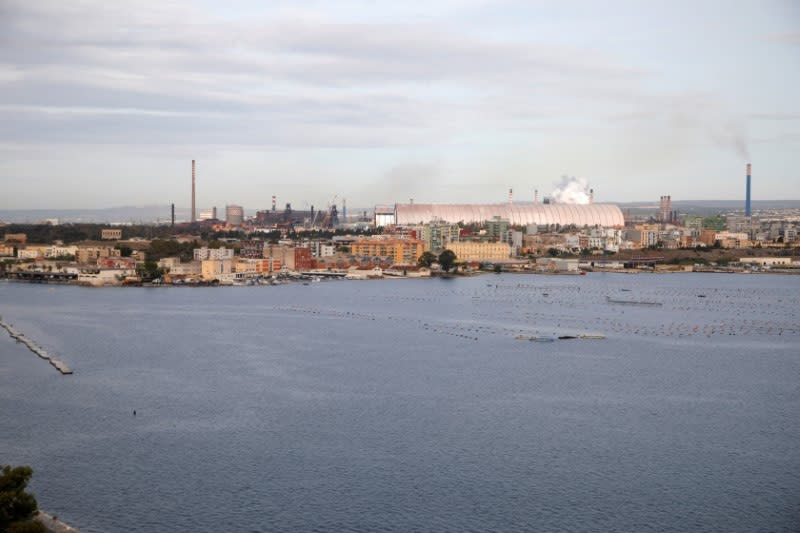Key events in the history of Italy's troubled Taranto steel plant

(Reuters) - Italy's former Ilva steel business, now called Acciaierie d’Italia (ADI), has a history marked by environmental and economic challenges and could be placed under special administration by the government.
Its output, less than 3 million tonnes in 2023 against a goal of 4 million, remains critical to the national economy. It employs around 8,200 people at its main plant in the southern city of Taranto and supports another 3,500 working in affiliated local businesses.
Following are some of the key dates in the history of the Taranto plant with which the group has become synonymous.
1960 - State-owned Ilva Group lays the first stone of a massive complex in the port city of Taranto with the eventual capacity to produce 10 million tonnes of steel annually for Italy's booming economy.
1965 - The Ilva Taranto plant opens its doors. Hundreds of olive trees have been uprooted to make way for 15 million square meters of the site.
1973 - Steel production in Italy begins to face higher energy costs and an economic slowdown triggered by the oil crisis following the Arab-Israeli war.
1980 - The European steel industry struggles with high production costs, including energy costs and over capacity. Increased competition from emerging economies and fluctuating demand for steel add to the challenges.
1988 - The Italian government decides to sell its steel plants across the country to private companies.
1995 - The Italian Riva Group, whose headquarters are in the northern city of Milan, become owners of the Taranto site.
2012 - Judicial authorities order the seizure of the Taranto plant for alleged environmental crimes, including air and water pollution. The Italian government takes control of the facility.
2016 – According to a report by a regional health authority, lung cancer death rates were a third higher than normal in districts near the Ilva plant, while death from respiratory illnesses were as much as 50% above average.
2018 - The Italian government sells ADI to ArcelorMittal, one of the world's largest steel producers, on condition that the Luxembourg-based group commits to environmental clean-up efforts.
2020 - Amidst economic challenges and disagreements over the environmental plan, ArcelorMittal announces its intention to pull out of the deal.
2021 - After months of wrangling with the steel giant, Italy agrees with ArcelorMittal to take back control of the troubled steel firm and guarantee thousands of jobs.
2024 – ArcelorMittal rejects an Italian government plan to take a controlling stake in the former Ilva, paving the way for legal battles.
(Reporting by Giselda Vagnoni; Editing by Keith Weir)

 Yahoo Finance
Yahoo Finance 